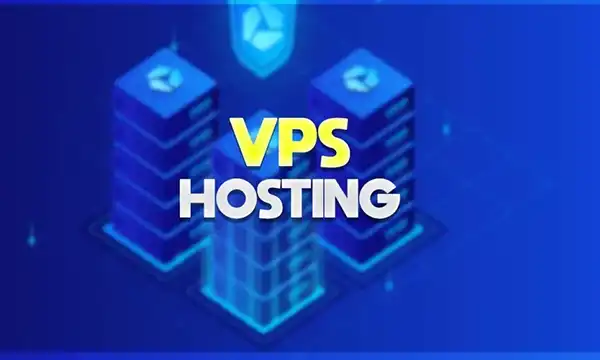Step-by-Step VPS Setup Guide
Ad
Due to the versatility that a Virtual Private Server (commonly known as a VPS) offers and the low cost of acquisition, it is quickly becoming one of the most popular website hosting options.
It offers dedicated resources while remaining cost-effective, offering a middle ground between shared hosting and dedicated servers. Offers a middle ground between shared hosting and dedicated servers.
This book outlines the main processes required to set up your own virtual private server (VPS).
Ad
Finding the Right Virtual Private Server Provider:
Choosing a reliable provider to host your virtual private server (VPS) is your first step. Given the plethora of options available in the market today, take the time to consider important aspects such as reliability, customer service, cost, and data center location. Choose a service provider that can meet all your individual needs.
Choosing the Best Virtual Private Server Plan:
Resource planning is a very important step when choosing a VPS plan. Analyze your project’s CPU power, RAM, storage, and bandwidth requirements. By choosing a plan with an appropriate share of available resources, you can ensure optimal performance of your website and application.
Ad
Operating System Decisions:
An important choice to make is choosing an operating system. Linux distributions such as Ubuntu, CentOS, and Debian are popular examples of the options available. Your decision should depend on your familiarity with the operating system and its compatibility with the programs you plan to use.
SSH and Remote Desktop to Access Virtual Private Servers:
Once you’ve set up your Virtual Private Server (VPS), you’ll need a way to access it. Secure Shell (also known as SSH) is the technology of choice for Linux-based servers because it provides secure command line access. On the other hand, if you are using a Windows server, you can access the server’s graphical user interface remotely using a program called Remote Desktop Protocol (RDP).
Initial Configuration of the Server:
An initial server configuration must first be performed before an application can be deployed. These tasks include creating user accounts, updating system packages, and configuring basic security settings. It is imperative to start protecting your server from potential threats.
Secure Your Virtual Private Server:
The level of security should be a major concern. Take security measures, such as firewalls and intrusion detection systems, to prevent unauthorized user logins. It is critical to regularly patch any security vulnerabilities in server software and operating systems.
Install Software and Adjust Settings:
Which software you need to install on your VPS depends on its purpose. Web servers such as Apache or Nginx, database management systems such as MySQL or PostgreSQL, and programming languages such as PHP or Python are examples of common components. Follow the installation instructions carefully to ensure that each component is correctly configured.
Setting Up a Web Server:
Configuring a web server is an absolute must if you plan to host a website. Creating web hosting, setting up a domain name, and managing online content are all necessary steps in the process. A well-designed web server ensures fast delivery of content.
Database Installation and Preferences:
For applications that rely on databases, setting up a database management system is an essential step. Create databases, grant users permissions, and customize database settings. A properly configured database ensures efficient data processing.
Domain and DNS Configuration:
Accessibility can be greatly improved by linking a virtual private server (VPS) to a domain name. It is necessary to configure records in the Domain Name System (DNS) to ensure that users can find your website or application by domain name.
SSL Certificate Installation:
Visitors concerned about their security expect encrypted connections. By installing an SSL certificate, you can enable HTTPS, a protocol that encrypts data as it is sent from the server to the user’s device. This prevents unauthorized persons from gaining access to sensitive information.
Putting Your Website or Application Into Production:
Now that you have your server, software and any necessary security measures in place, it’s time to launch your website or application. You now need to upload the files, configure the settings and check that everything works. Before your idea goes into production, it must be thoroughly tested.
Backup and Data Management:
Data loss can have devastating consequences. Make a backup plan to periodically copy the data stored on the server to another location. An automated backup solution makes this process much easier and helps you quickly recover from any issues.
Monitoring and Maintenance:
Concerns about server performance remain. Install monitoring tools to track resource usage, server status, and application performance. Provided you perform routine maintenance on it, such as software upgrades and security audits, your Virtual Private Server will continue to function normally and securely.
Conclusion:
Even if you don’t have extensive information technology work experience, you can install a virtual private server. By following the steps in this detailed guide, you can confidently set up a robust hosting environment for your projects.
Remember that security should be your top priority, keep learning about server administration and explore the many options your VPS has to offer.
FAQs:
1. Does VPS installation require technical experience?
While technical knowledge is helpful, many VPS providers offer user-friendly interfaces and resources for beginners.
2. Can I upgrade my VPS subscription later?
Yes, most VPS providers allow you to upgrade your plan if your resource needs change.
3. What is the difference between managed and unmanaged VPS?
Managed VPS plans come with technical support and maintenance, while unmanaged plans require you to do most of the tasks yourself.
4. Can I host multiple websites on one VPS?
Absolute! You can set up web hosting to host multiple websites on one VPS.
5. How often should I back up my VPS?
Regular automatic backups (preferably daily) help protect your data and minimize potential loss.
 Supercharge Your Website: The Magic of VPS Servers
Supercharge Your Website: The Magic of VPS Servers
Ad In the magical world of the internet, where websites are digital stores and gateways to a […]
More Ensuring Website Security: VPS Server Measures
Ensuring Website Security: VPS Server Measures
Ad In today’s connected world, where the Internet is a way for businesses to connect with customers, […]
More Scaling Your Website with VPS Hosting
Scaling Your Website with VPS Hosting
Ad In today’s digital world, where websites are key to brand awareness and user engagement, the importance […]
More